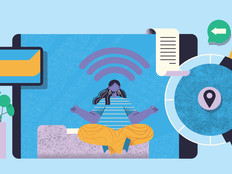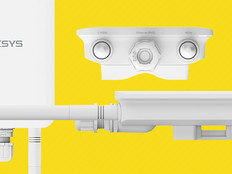3 Tips to Prepare Schools for Connected Devices
Whether they’re tracking student engagement or enabling experiential learning, wearable devices hold particular promise in K–12 education.
The New Media Consortium (NMC) predicts the technology is only four to five years away from achieving widespread use in the space. With that in mind, some schools already have big plans for the future.
For example, technology-centric charter school Washington Leadership Academy in Washington, D.C., will next year reimagine chemistry class by using virtual reality (VR) headsets to provide hands-on learning opportunities.
According to Joey Webb, principal at the newly completed school, students already use VR technology to explore Yosemite National Park’s geography and history in ways that wouldn’t be possible with traditional teaching materials.
“Whether it’s a tour of Yosemite with President Obama or standing on a space deck in a fictional universe, when people put the headsets on, they see the highly immersive experiences VR can offer and immediately understand that this can be a valuable tool in learning,” Webb says.
As an added benefit, exposure to the wearable technology helps prepare students for the VR-related STEM jobs of tomorrow, the NMC writes in its K–12 Horizon report.
“We’re hopeful our kids can be on the cutting edge as the technology moves forward,” Webb says.
As schools take similar steps to incorporate VR headsets and wearables into their curricula, IT leaders and administrators will need to carefully design a roadmap for success. Here are three considerations that will help them get started:
1. Network Upgrades Are Integral
K–12 mobility initiatives — combined with President Obama’s 2013 ConnectED initiative — have led many schools to upgrade or build out their Wi-Fi networks to accommodate an influx of tablets, notebooks and other devices.
Samantha Becker, senior director of publications and communications at NMC, says that in making those improvements, schools laid the groundwork for supporting the bandwidth requirements of wearable technology.
But that doesn’t mean K–12 IT professionals are off the hook: According to a 2016 Funds for Learning report, 44 percent of E-Rate applicants surveyed said their Wi-Fi network was more than three years old. Those schools will need to monitor network performance as the equipment ages, and will likely need to replace aging hardware to ready their wireless infrastructure for the future.
2. Student Privacy Must Be Considered
Although the ability of wearable technology to aggregate and share user data is one of its biggest advantages, schools must tread carefully to avoid backlash.
Mark Femrite, assistant superintendent of teaching and learning at Westonka Public Schools in suburban Minneapolis, took precautions when implementing a full-scale wearable initiative during the 2015–16 school year.
The program, designed both to combat declining enrollment in elective gym classes and to get students excited about exercise, outfits students in fourth through 12th grade with heart rate monitors; students in second and third grade use ankle pedometers.
The data from each student’s device is sent to an app on the teacher’s tablet and projected onto a large screen that lists metrics such as calories burned.
Femrite says that before Westonka decided on a technology supplier, the district asked vendors how data would be safely transmitted and stored.
“All data is secured and the manufacturer follows HIPAA and CEPA regulations,” he says, referring to the results of the inquiry.
Westonka also limits access to the app to ensure students’ fitness data remains private — only Femrite and the district’s physical education teachers are authorized to use it.
3. Testing and Training Are Key to Success
Many wearable devices are built with ease of use in mind, but, as with other technology rollouts, successfully implementing the technology requires thorough planning.
For instance, before debuting its wearable-based program, Westonka conducted a 2015 pilot featuring 85 fourth-grade students and 90 seventh-grade students.
Femrite, six Westonka phys ed teachers, and a district IT staffer also attended a daylong webinar, hosted by the manufacturer, to learn more about the device and corresponding app.
“You cannot throw technology at people and expect it all to work perfectly,” Femrite says. “There was a lot of planning to amp up for the launch in fall 2015. Then we rolled into this year with the kinks worked out, like we’d had it forever.”








